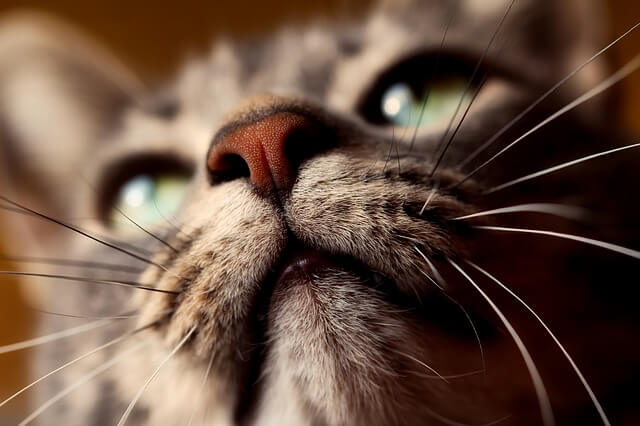Have you ever seen a shaved cat and wondered why its whiskers were left long? Have you ever thought about trimming your cat’s whiskers, either because you think it will help her look better or because you think they might be getting in her way?
Whiskers aren’t just accessories – they actually provide vital information to your cat and act as an additional sensory system. And they don’t only sprout from your kitty’s snout. Whiskers (called vibrissae) also grow above their eyes, on their chin and jaw line, and on the back of their front legs. Here’s a list of things a cat’s whiskers help with – and reasons not to trim them!
#1 – They help cats be more graceful
Each whisker contains a sensory organ called a proprioceptor. It helps cats know where their body and each of their limbs are in space at any given moment in time. This helps them make graceful leaps around your house instead of wiping out and winding up on YouTube.
#2 – They help cats move in the dark
Cats are nocturnal animals, and one of the ways they find their way at night is by using their whiskers to feel nearby objects without their entire body brushing up against it. They also help a cat determine whether or not she can fit inside a particular space.
#3 – They help locate prey
Whiskers can detect the tiniest air vibration from movement, which can help them locate prey, even when they have their eyes closed. That’s why it’s so difficult to sneak up on a cat, even if it appears to be sleeping.
As you can see, whiskers are extremely important for cats. They won’t die if their whiskers are cut off, but it would be like having the tips of your fingers cut off and not being able to feel the texture of anything.
Bottom line: whiskers should never be trimmed, shaved, dyed, or curled.
(H/T: The Mercury News)

